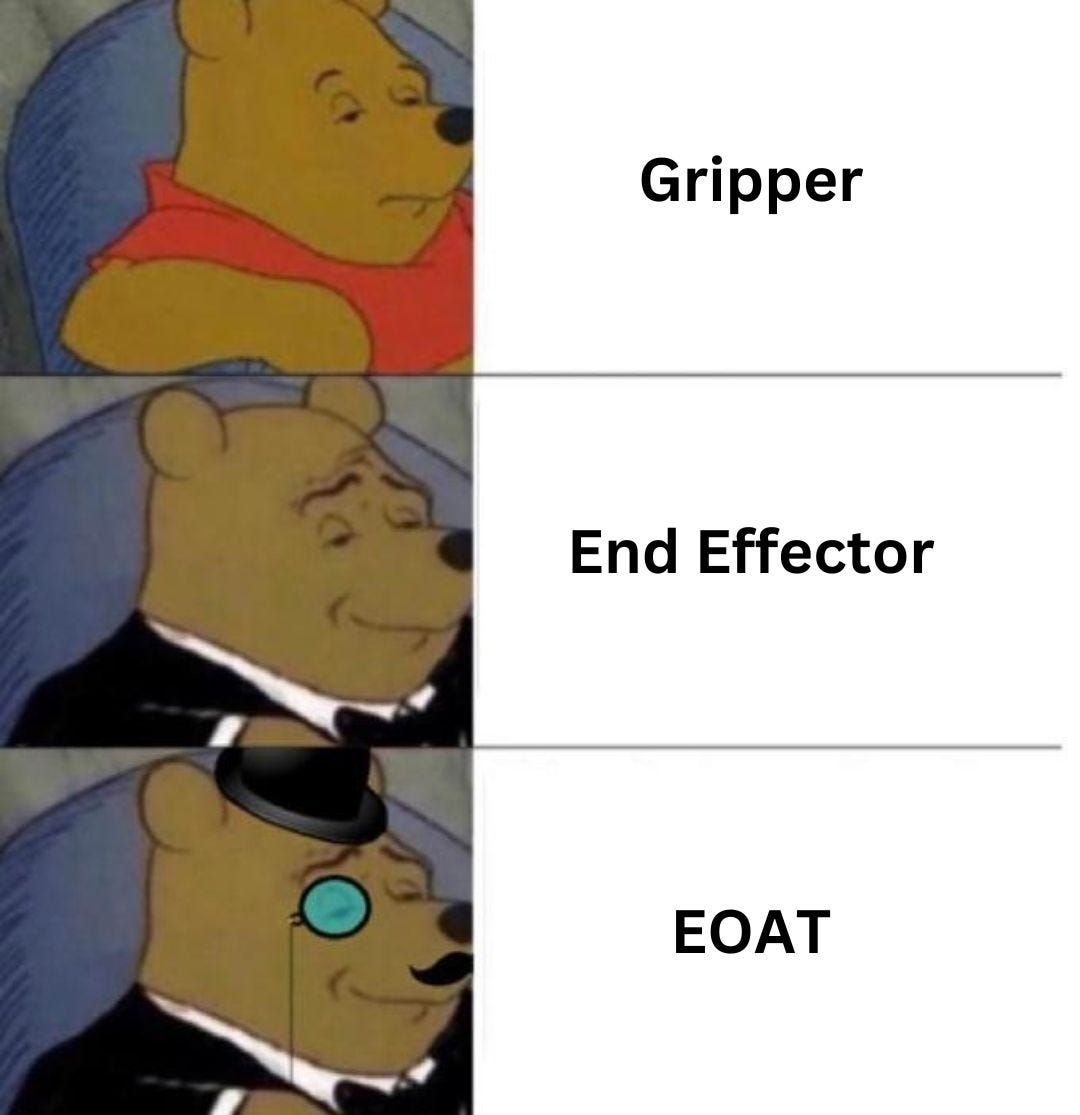EP.69 A NEW MINI-ROBOT FROM HUGGING FACE
Another six-legged robot on the market, TRI advancing robot learning with new models, another week, and another humanoid in the race & much more...
Open-source mini robot from Hugging Face! 🤗
Hugging Face has unveiled Reachy Mini, a new compact robot developed in collaboration with Pollen Robotics, designed to make embodied AI more accessible to developers, educators, and researchers. Measuring just 28 cm tall and weighing under 1.5 kg, Reachy Mini is positioned as a playful, desktop-ready platform for experimenting with human-robot interaction and multimodal AI applications.
Equipped with a motorized head, expressive antennas, and built-in sensors including a camera, microphone array, and speaker, the robot is built for interactive audio-visual engagement. Reachy Mini supports over 15 robot behaviors at launch, with full programmability in Python and plans for JavaScript and Scratch compatibility in future updates.
Reachy Mini’s open-source hardware, software, and simulation stack are intended to foster collaboration and community-driven development. Hugging Face anticipates the Lite version will begin shipping in late summer 2025, with the Compute model following in phased releases through 2026.
A new humanoid robot from MagicLab, MagicBot Z1 🧪
Released last week, the MagicBot Z1 is a newly introduced humanoid robot designed for advanced industrial scenarios. It features a high-performance joint system with 24 base degrees of freedom—expandable to 49—and torque exceeding 130 Nm. The robot supports complex movements like steep bending and rapid elevation changes, with a joint range of up to 320°.
Built with high-strength aluminum and engineering plastics, Z1 is impact-resistant and thermally optimized for long-term stability. It includes a 3D LiDAR, stereo cameras, and Magic Atom navigation for autonomous operation in challenging environments.
The platform supports expressive, human-like interactions through multimodal sensing and comes in two versions: a standard model for enthusiasts and a developer edition with advanced features like dexterous hands and powerful compute units.
Meme of the week 🤖
So what should we call them?
TRI advances robot learning with Large Behavior Models 🧠
The Toyota Research Institute (TRI) has unveiled new findings that could accelerate the future of general-purpose robotics. In a comprehensive study, TRI demonstrated how its Large Behavior Models (LBMs)—AI systems trained on massive and diverse datasets—can significantly improve the learning speed and performance of robotic systems.
The research shows that a single LBM can learn hundreds of tasks and generalize new ones using up to 80% less training data than conventional approaches. These pretrained models outperform from-scratch policies, offering more consistent results, especially in complex, real-world scenarios requiring robustness to changing environments.
LBMs function by consuming data from robot sensors and generating appropriate actions, essentially acting as the decision-making engine of an autonomous machine. TRI's LBMs are based on a diffusion transformer architecture that predicts time-chunked actions from multimodal input—vision, language, and proprioception. This design enables sophisticated, long-horizon tasks such as bimanual assembly with coordinated robot arms.
They trained its models on nearly 1,700 hours of diverse data, including internet-sourced robot videos, in-house teleoperation data, and simulated environments. The result: better performance even on tasks the models hadn’t seen during training, validated across thousands of rollouts in both physical and simulated tests.
The Hexplorer, a six-legged robot from Dobot 👀
Unlike traditional quadrupeds, Hexplorer uses a hexapod configuration for enhanced stability and control. With three legs always grounded, it maintains balance across steep grades, loose surfaces, and irregular terrain—ideal for industrial or outdoor use cases. Dobot positions Hexplorer as a powerful evolution of the robotic dog form factor, optimized for carrying payloads with precision and minimal motion disturbance.
Hexapods have long been explored in research and military contexts, but rarely see commercial deployment. The Hexplorer signals a shift toward real-world application, combining Dobot’s practical automation experience with the terrain versatility of six-legged platforms.
The move follows other notable hexapod milestones, including Lenovo’s Daystar GS, which operated in Antarctic conditions while hauling 100 kg loads, and Boston Dynamics’ legacy Rhex platform developed with DARPA support. While firms like Boston Dynamics have pivoted to quadrupeds and humanoids, Dobot appears to be doubling down on the raw utility of multi-legged design for next-gen industrial robotics.



